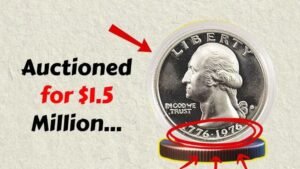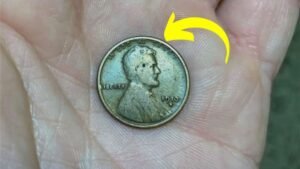Imagine finding a penny in your wallet worth $6 million! It sounds like a dream, but some rare Lincoln Wheat Pennies could make you rich. These coins, minted from 1909 to 1958, are more than just pocket change for collectors. One special penny, the 1943 copper version, is so rare it’s valued at millions. Even better? It might still be hiding in your change jar! Let’s dive into why this coin is so valuable, how to spot it, and what to do if you find one.
What Makes the Lincoln Wheat Penny So Special?
The Lincoln Wheat Penny was the first U.S. coin to feature a real person—President Abraham Lincoln. Designed by Victor David Brenner, it was created in 1909 to celebrate Lincoln’s 100th birthday. The coin’s front shows Lincoln’s face, and the back has two wheat stalks, giving it the nickname “Wheat Penny.” While most of these pennies are worth just a few cents, certain rare ones, like the 1943 copper penny, can fetch millions at auctions due to their scarcity and historical value.
The 1943 Copper Penny: A Million-Dollar Mistake
During World War II, the U.S. Mint switched to steel pennies in 1943 to save copper for the war. But a few copper pennies were accidentally made that year, creating one of the rarest coins ever. Only about 15 to 20 of these 1943 copper pennies are known to exist, making them a collector’s dream. One sold for $1.7 million in 2010, and experts say a perfect one could be worth $6 million or more today
Why Is the $6 Million Lincoln Wheat Penny So Valuable?
Several factors make certain Lincoln Wheat Pennies incredibly valuable:
| Factor | Why It Matters |
|---|---|
| Rarity | Only a few 1943 copper pennies exist, driving up their value. |
| Minting Error | The mistake of using copper instead of steel in 1943 makes these coins unique. |
| Condition | Coins in mint condition (shiny, no scratches) are worth more. |
| Historical Value | The wartime story and Lincoln’s legacy add to the coin’s appeal. |
Could a $6 Million Lincoln Wheat Penny Still Be in Circulation?
Yes, it’s possible! Billions of Lincoln Wheat Pennies were minted, and some rare ones could still be in piggy banks, old collections, or even your pocket change. People have found valuable coins in unexpected places, like inherited jars or store change. In 2019, a 1943 copper penny sold for over $200,000 after being found in a family collection. The chance of finding a $6 million Lincoln Wheat Penny keeps collectors and everyday folks searching
How to Spot a Valuable Lincoln Wheat Penny
Want to hunt for a $6 million Lincoln Wheat Penny? Here’s how to check:
- Look at the Year: Focus on 1943 pennies. Other valuable years include 1909-S, 1914-D, and 1955.
- Check the Material: Use a magnet. Steel pennies stick; copper ones don’t. A 1943 copper penny is the rare one!
- Inspect the Mint Mark: Look for “S” (San Francisco) or “D” (Denver) under the date. These can be more valuable.
- Examine Condition: Shiny, well-preserved coins are worth more. Don’t clean them—cleaning lowers value!
- Weigh the Coin: A 1943 copper penny weighs about 3.11 grams, while steel ones are around 2.7 grams.
What to Do If You Find a Rare Penny
If you think you’ve found a $6 million Lincoln Wheat Penny, follow these steps:
- Don’t Clean It: Cleaning can ruin its value.
- Store It Safely: Use a protective coin holder to avoid scratches.
- Get It Checked: Take it to a professional grading service like PCGS or NGC to verify authenticity.
- Sell Smart: Auction houses or reputable coin dealers can help you get the best price.
Start Your Treasure Hunt Today!
The $6 million Lincoln Wheat Penny is more than just a coin—it’s a piece of history that could change your life. While finding one is rare, the possibility keeps the excitement alive. Next time you get change at the store or clean out a drawer, take a closer look at those pennies. You might just find a fortune hiding in plain sight! Check your coins, and who knows? Your next penny could be the legendary Lincoln Wheat Penny worth millions.
Disclaimer: Coin values can change based on market conditions. Always consult a professional before selling.



